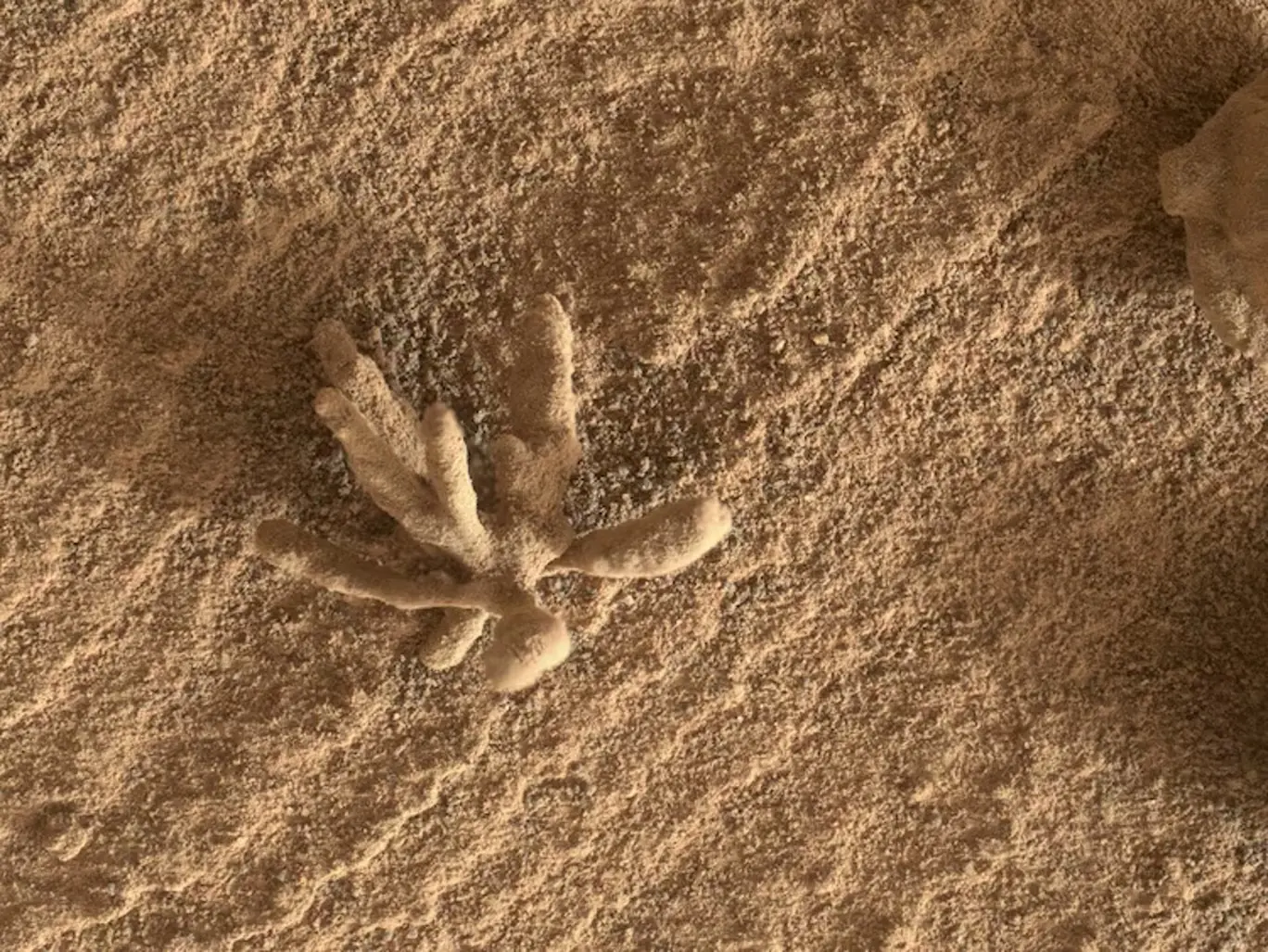| Summary |
|
NASA’s Curiosity rover has spotted rock formations on Mars that look strikingly like coral or flowers. One of the most recent finds, photographed on 24 July, 2025, is a wind-eroded rock about an inch wide, shaped like a piece of reef. These unusual shapes formed when mineral-rich water once flowed through cracks in the rock and left hardened deposits behind.
Billions of years ago, Mars had rivers, lakes, and possibly an ocean. Water carried dissolved minerals into fractures in the bedrock. When the water evaporated, it left behind minerals that hardened over time. On Earth, the same process creates intricate structures in deserts and dried lakebeds.
On Mars, eons of wind-driven sand have worn away softer material, leaving behind the more resistant mineral ridges in shapes resembling flowers or corals.

The newly photographed “Paposo” rock joins a growing list of similar discoveries. In 2022, Curiosity found another flower-shaped rock believed to have formed in the same way. In June this year, the rover also imaged “spiderweb” patterns—networks of ridges that are further evidence of water activity beneath the surface in the planet’s past.
Curiosity landed in Gale Crater in 2012 after an eight-month, 352-million-mile journey from Earth. Since then, it has travelled over 22 miles, studying Martian geology and climate. Its findings confirm that Mars once had environments that could have supported microbial life.
The ongoing mission continues to collect samples and images, helping scientists piece together the story of how the Red Planet changed from a watery world to the cold desert we see today.
These coral-like rocks are physical records of ancient Martian water systems. Each new discovery adds detail to our understanding of Mars’ history and raises fresh questions about the planet’s past climate, its underground water reserves, and its potential to have once hosted life.

